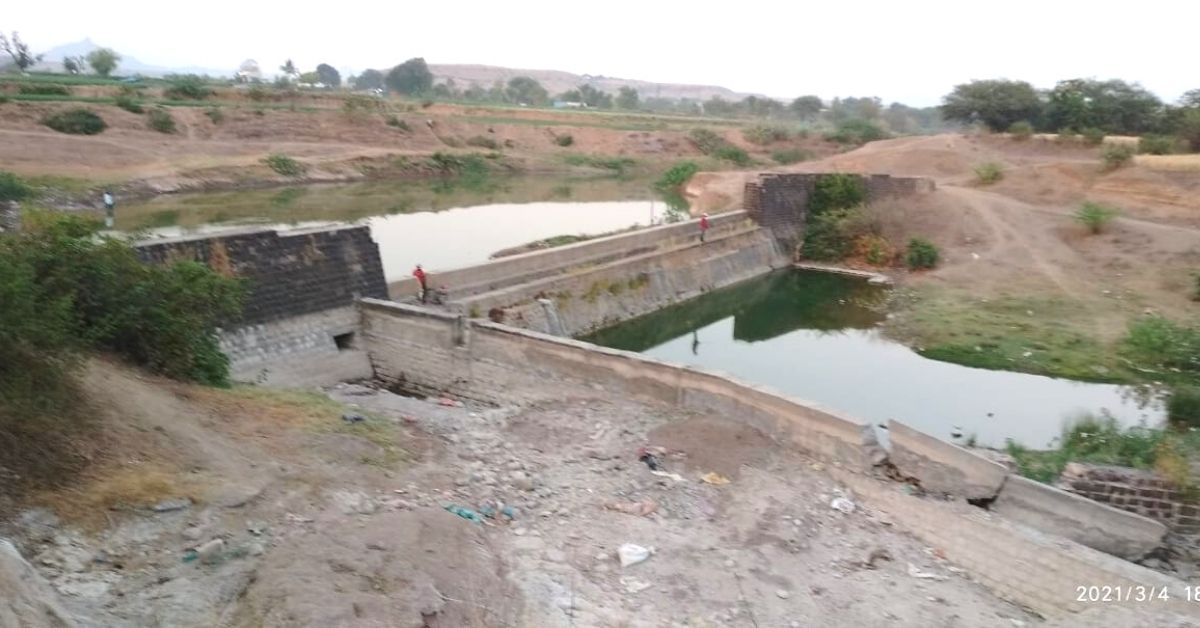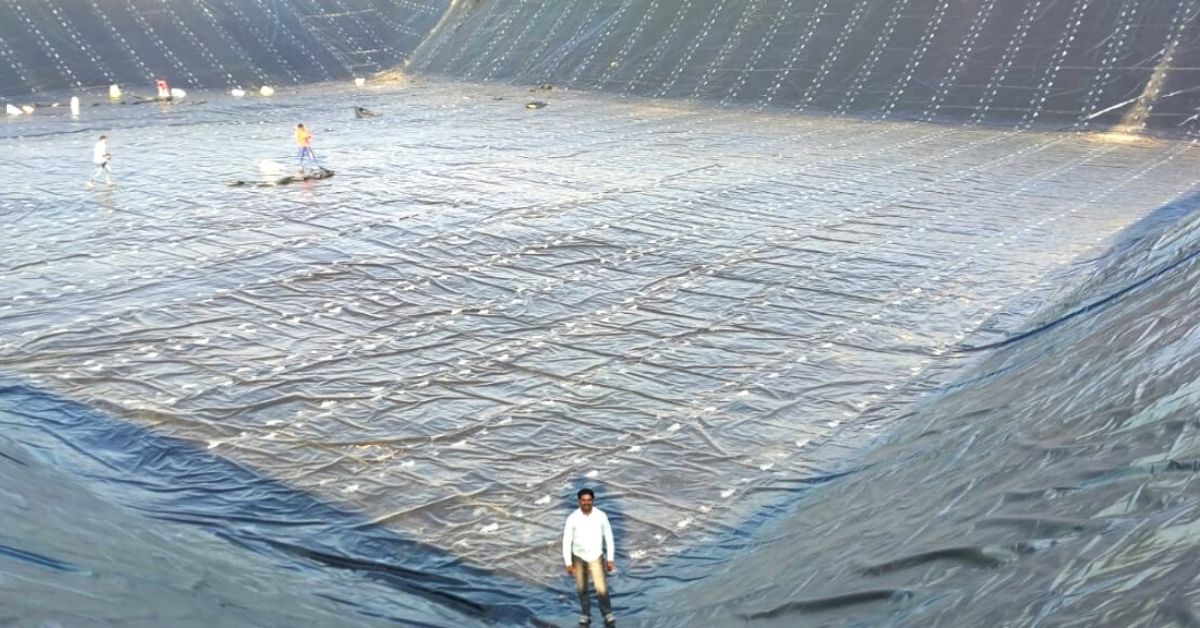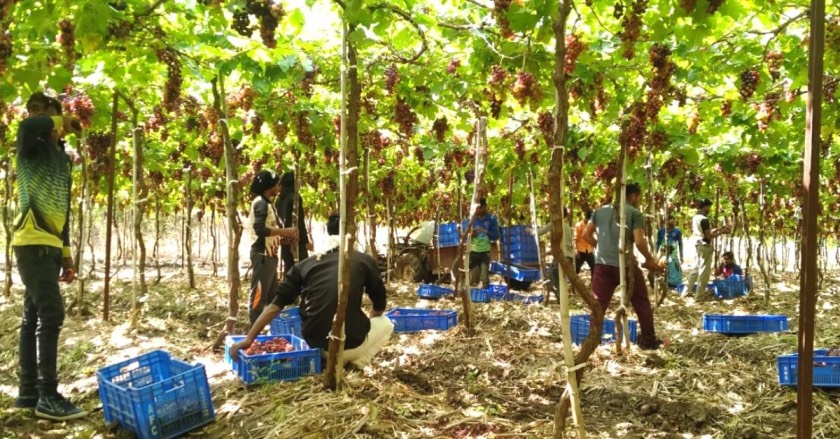In the 1990s, Vadner Bhairav, located around 45 km from Nashik, was a prosperous village. The farmers would grow and sell high-quality betel leaf produce in Nashik, Mumbai and other parts of Maharashtra. However, over the years, the activity has become infeasible. This has been due to decreased rainfall and escalating water usage in agriculture. The Jambutke Dam, the only water source for irrigation in the area, became incapable of meeting the growing demands of the farmers.
“Agriculture activity tripled in the area. A majority of the farmers grew betel leaves, which consume a lot of water. The groundwater levels also started depleting,” says Nitin Mohite, a farmer from the village.
Nitin says the water shortage led to a reduction in land cultivation. By 2010, the water crisis had started becoming severe. And by 2015, the situation had aggravated, to the extent that not even groundwater levels could meet the irrigation needs. “Farmers began scrambling for the water pipeline and finding other means to source water for irrigation. Growing crops in the summer became a challenge. Fortunately, the village did not face a drinking water crisis,” he adds.
However, villagers knew they had to band together to mitigate the crisis. Since 2017, collective resolve has helped them construct over 1,000 farm ponds and 150 barrages to arrest and percolate water. The efforts have helped villagers save over 50 crore litres of water. The surplus resource allowed them to shift cultivation to grapes, and export 600 tonnes of the fruit.
A community effort

The idea of shifting the cultivation pattern came from a handful of experimenting villagers, who had been growing grapes since the 1970s. The villagers started growing a ‘Bhokri’ variety of grapes, and went on to try cultivating others such as the Dogridge rootstock, which is tolerant to drought and water stress, as well as Thompson, Ganesh and Sonaka.
Farmers also strategised on water conservation projects. Nitin says that initially, a few barrages were constructed along the hill-slopes in the village. The water barrages helped increase the groundwater levels and surface ponds in the vicinity. The hill has 2,100 acres of forest area, and the trees helped in the conservation process.
The villagers reached out to the gram panchayat to seek government funds, and also pooled in their own money. They decided to adopt different water arresting techniques like the Shirpur pattern — which involves recharging the well, creating barrages and deepening canals or streams — concrete barrages, de-silting the dam and digging trenches along the slopes. Building water barrages helped them conserve 20 lakh litres of water. The villagers also opted for the government farm pond scheme. A few old barrages, dating back to the British era, underwent repairs for the purpose.
Around 1,000 such farm ponds sprouted across the village, each ranging from the size of 0.25 acres to 2 acres. The farm ponds recharge from rainfall every year. The big one has the capacity to store 1 crore litres of water.

“The village has a population of 24,000, and there are about 2,300 farmers. The amount of water suffices for agriculture activities on about 7,800 acres of land,” says Bapu Salunkhe, a farmer in the village.
Interestingly, Bapu has also won the National Water Mission Award in 2019 for saving 2 crore litres of water alone through conservation efforts.“I was one of the few who started water conservation activities in the early 2000s and could guide the village for the purpose,” he adds.
Bapu says the massive water resource helped farmers grow grapes on a large scale. The grape growers association also organised visits of experts from Chile to guide and consult the farmers. “Today, almost all the farmers grow grapes in the area. About 600 tonnes of grapes are produced and exported to countries including Bangladesh, and Europe. The exports fetch better incomes for the farmers,” he adds. The high-quality grapes became popular and saw visitors to the vineyards from countries including Japan, South Africa and Spain. Besides grapes, the farmers grow soybean, onion, corn and chilly.
Learning the hard way

Despite having enough water availability, the villagers had learned hard lessons from the drought conditions and water scarcity in the past. They started adopting efficient irrigation systems to save water.
“They implemented organic mulching techniques made from sugarcane bagasse, grass and residue from soybean, wheat and other agriculture waste. The flood irrigation that was used to water the farms was replaced with the drip. It ensured maintaining the required humidity in the soil,” says Roshan Suryawanshi, the village development officer.
Roshan said the farmers prepared a time-table to follow the rotations for irrigation. “They realised that excess water affected the production and harvest. Hence, a scientific approach was applied in the water conservation practices,” he adds. The prosperity brought by water in the village has made the residents respect nature and take steps towards its conservation.
“All the schools, colleges and new buildings have a rainwater harvesting system. It has been made mandatory to do so before issuing a completion certificate. The village wants to save every drop of water by recharging the groundwater,” Roshan adds.

He says the village also has solar-powered street lights and LED bulbs that are less damaging to the environment. A majority of the citizens have been trained and practice the waste segregation process. “The villagers have trained aggressively during the COVID-19 lockdown to segregate dry and wet waste. The plastic is further segregated from the dry waste and collected separately to send for recycling. A biogas unit is set up, to move to a more renewable source of energy,” he adds.
The resident says that a nearby dumping ground is also undergoing cleaning and treatment.
Though the situation looks to have improved, Bapu says that a crisis is still awaited, as farmers need to brace for the impacts of climate change. “The water crisis is estimated to aggravate in the coming decades, and we need to prepare in advance. Farmers should resort to rainwater harvesting and recharging groundwater. The use of mulching and micro-irrigation techniques helps save more than 25% of water use. These are the only ways to become water resilient and brace for the future water crisis,” he adds.
Edited by Divya Sethu
No comments:
Post a Comment